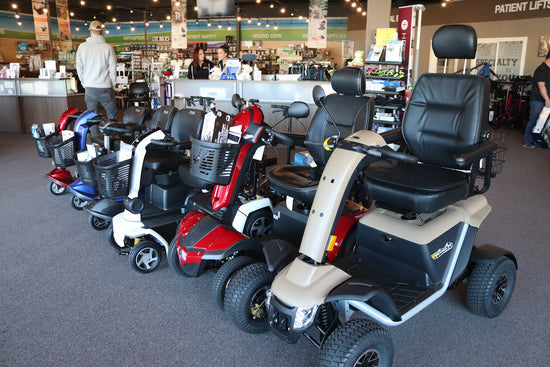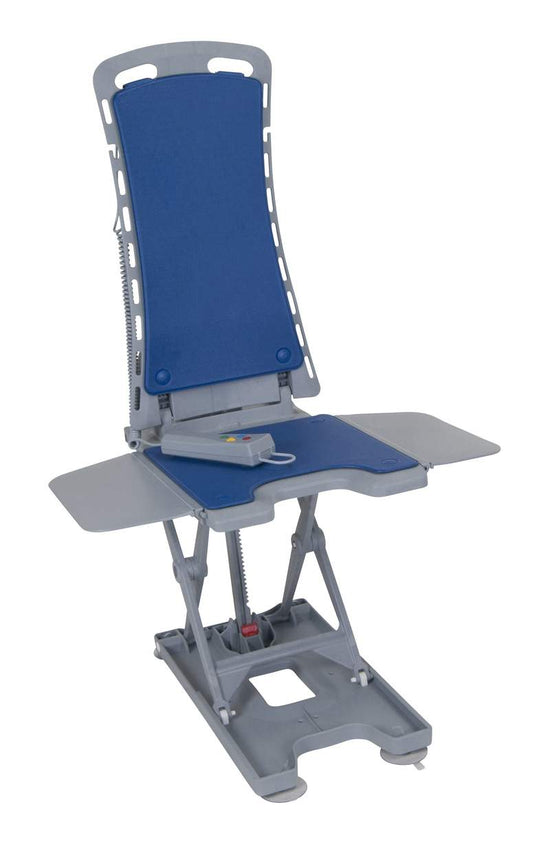Creating accessible bathroom spaces is no longer just a consideration for hospitals and care homes—it's an essential part of modern residential and commercial design. Whether you’re planning a home renovation for aging in place or managing a public facility that must comply with accessibility standards, bathroom equipment plays a critical role in safety, comfort, and independence.
One of the most effective ways to enhance accessibility is through modular bathroom equipment. These systems are designed with flexibility in mind, allowing for components like grab bars, shower seats, adjustable sinks, and toilets to be installed based on individual needs. Modular solutions adapt to various physical requirements, making them ideal for environments where users may have different mobility challenges.
For facility managers and home renovators, understanding the benefits of modular bathroom equipment is key to creating functional and inclusive spaces. In this blog, we’ll explore how modular setups improve accessibility, ease installation and upgrades, and support compliance with accessibility regulations—all while offering long-term value.
What Is Modular Bathroom Equipment?
Modular bathroom equipment refers to a system of customizable, interchangeable components designed for bathroom installations. These components—such as wall-mounted sinks, adjustable grab bars, foldable shower seats, and movable cabinets—can be easily adapted to meet the specific needs of the user or the space. Unlike traditional fixed installations, modular setups offer flexibility and scalability, making them especially valuable in accessibility-focused design.
In environments where users may have diverse mobility needs, such as elder care facilities, hospitals, or multi-generational homes, modular equipment allows for targeted solutions. For instance, a sink that can be adjusted to different heights accommodates both wheelchair users and those who stand while washing. Similarly, modular grab bars can be added or repositioned over time as needs change.
The ability to reconfigure or upgrade without a complete renovation makes modular bathroom equipment an ideal investment for both short-term solutions and long-term planning. It’s not only a functional choice but a strategic one—helping facilities and homes remain adaptable, future-proof, and inclusive.
Ultimately, modular systems turn a one-size-fits-all space into a user-focused environment that prioritizes safety, ease of use, and dignity.
How Modular Design Supports Accessibility
Accessibility in bathroom design is about more than just meeting regulations—it’s about ensuring people can use the space safely and independently. Modular bathroom equipment directly supports this by enabling tailored configurations that adapt to users' physical needs.
For instance, someone recovering from surgery may need temporary support bars and a seated shower option, while a long-term wheelchair user may require a roll-under sink and a wider turning radius in the layout. Modular equipment allows these elements to be installed precisely where needed, without permanently altering the structure.
Moreover, the adjustability of modular equipment ensures ongoing relevance. As users age or their conditions change, bathroom features can be reconfigured without extensive remodeling. This flexibility makes it easier for facility managers and homeowners to maintain accessibility without incurring high costs or downtime.
Modular systems also enhance caregiver support. Elements like fold-down shower seats or moveable storage units help maintain cleanliness and order while allowing caregivers to assist efficiently. In public or shared spaces, having modular setups means different users can feel comfortable and secure using the same bathroom.
By embracing modular design, you create environments that respect individual dignity while delivering practical, user-centric solutions for real-world accessibility challenges.
Cost-Effectiveness and Ease of Installation
One of the biggest advantages of modular bathroom equipment is how it reduces the overall cost and complexity of making a bathroom accessible. Traditional renovations can be expensive and time-consuming, but modular solutions streamline both installation and future upgrades.
Here’s why modular systems are cost-effective:
-
Faster Installation: Components are designed for easy mounting and integration, reducing labor costs and downtime.
-
Less Waste: Instead of demolishing entire sections, you can replace or adjust specific elements.
-
Scalable Investment: Start with the basics and expand later as needs evolve, spreading costs over time.
-
Long-Term Value: Modular equipment adapts to users’ changing conditions, reducing the need for repeated full renovations.
-
Universal Fit: Components often come with standardized fittings, making them compatible across different spaces.
Ease of installation is especially important in commercial or healthcare environments where downtime affects service delivery. With modular setups, upgrades can often be completed in a single day, minimizing disruption.
From a budget perspective, modular systems offer a sustainable way to provide high-quality, accessible bathroom solutions without sacrificing flexibility or function.
Customization for Different User Needs
No two users are the same, and modular bathroom equipment addresses this by offering highly customizable configurations. Whether a person needs a lower sink, a right-handed support bar, or a specific type of seat, modular solutions make it possible to personalize every detail of the bathroom.
This adaptability is especially valuable in multi-user environments. In a care home or public facility, you may be supporting individuals with different physical and cognitive needs. A modular setup can include sensory-friendly fixtures, anti-slip surfaces, or even height-adjustable toilets to suit these variations.
For home renovators, modular systems allow design choices that feel personal, not clinical. A bathroom can be made stylish and accessible, without compromising comfort or aesthetics. Users can select from various finishes, ergonomic shapes, and smart technology integrations that enhance usability.
Ultimately, the ability to customize ensures that the space works for the user, not the other way around. This creates not just safer environments, but also ones that restore confidence and independence to those using them.
Common Mistakes to Avoid When Choosing Accessible Bathroom Equipment
Selecting the right bathroom equipment for accessibility requires thoughtful planning. Here are common pitfalls to avoid:
-
Ignoring Future Needs: Designing only for current conditions can lead to costly changes later. Think long-term.
-
Choosing Non-Modular Fixtures: Fixed equipment may limit future adaptability and require full renovation if needs change.
-
Overcomplicating Layouts: Accessibility thrives on simplicity. Crowded or overdesigned layouts can hinder mobility.
-
Neglecting Professional Input: Always consult with an accessibility expert or occupational therapist to ensure needs are met.
-
Prioritizing Aesthetics Over Function: While design matters, safety and usability should always come first.
Avoiding these mistakes ensures your investment in bathroom equipment leads to lasting accessibility and convenience. It also supports user independence while minimizing future remodeling costs.
Compliance with ADA and Accessibility Standards
For facility managers especially, compliance with the Americans with Disabilities Act (ADA) and other local accessibility standards is non-negotiable. Modular bathroom equipment is a powerful tool in meeting these legal requirements without sacrificing flexibility or aesthetics.
ADA guidelines specify dimensions, clearances, and hardware types for accessible bathrooms. Modular systems are often manufactured with these standards in mind, making it easier to ensure compliance from the start. For example, grab bars must be installed at specific heights and distances, and modular systems typically offer pre-configured options to match those specs.
Because modular components are adjustable and upgradable, they also help maintain compliance as regulations evolve. In commercial or public settings, this is a key advantage—allowing you to remain legally up to date without major overhauls.
Beyond legality, using ADA-compliant modular bathroom equipment signals a commitment to inclusivity. It shows users—whether they’re employees, residents, or customers—that their needs are considered and respected.
If you're planning a bathroom renovation or managing a facility that requires accessible solutions, modular bathroom equipment is the smart, future-proof choice. For high-quality, customizable systems that support accessibility, comfort, and safety, trust the experts at Everything Medical—your go-to source for home medical equipment and supplies in Redding, California.
Visit Everything Medical today to find the right solutions for your space and ensure every bathroom is built for independence and dignity.




